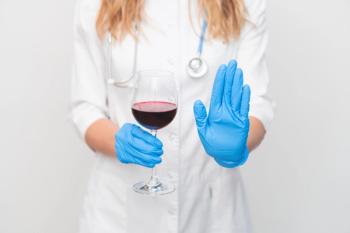
- Psychiatric Times Vol 28 No 11
- Volume 28
- Issue 11
Self-Medication: Medicating the Doctor, Medicating the Patient
When working with patients who are at high risk for relapse or misuse of prescription medications, careful documentation of the informed consent process is a helpful risk management tool.
The idea of “self medication” explored and refined by Edward J. Khantzian, MD,1,2 and David F. Duncan, PhD,3 in the mid-1970s and 1980s, was used to define the possible psychoanalytic bases for substance abuse (Khantzian) or a behavioral basis for it (Duncan). It has been a useful tool for clinicians and patients alike. If asked, it would not be unusual for patients who have spent any time being patients to invoke this when asked about their drug histories. The self-medication model has allowed these patients to communicate with less shame and guilt. It allows clinicians to factor in drug use as part of their assessments.
However, the exploration must not stop there: for patients, self-medication can become a rationalization for continued drug use.4 For clinicians, there can be the false expectation that their patients’ illicit or improper drug use will end once therapy begins. So unfortunately, the insight that illicit drug use may serve a function for patients may lead to resistance by patients and clinicians to finding a creative alternative to self-medication for an unbearable affect.
The “spirit” engendered by the self-medication hypothesis-that the un(under)explored areas of patients’ lives may well have caused (or will cause) them harm and that creating a safe environment in which these can be discussed can be a powerful treatment tool. What follows are some suggestions to help clinicians and their patients in this journey.
Take a substance abuse history of all patients. Explore how patients believe they have benefitted from such use (eg, “Tell me what is good about alcohol for you”).5 The question, by its nonjudgmental nature, may facilitate the therapeutic alliance. The answer to the question can help clinicians better understand the role of substances in their patients’ lives. If one follows the Khantzian model, one can perhaps gain insight into untreated psychiatric pathology; following the Duncan model, clinicians may better understand what substances are exacerbating the psychiatric pathology.
Be aware of the power the “self-medication” notion may have for some patients. Perhaps they fear that letting go of the substance would make their symptoms unbearable-or perhaps the notion that their self-drugging is self-medicating is less frightening than alternative points of view. Respect, but do not enable, the reality patients have created for themselves. While being tactful, be authentic and work with patients to validate “the person” even when challenging the person’s harmful self-concepts and habits.6
Learn about patients’ personal medical, family, and social background to better formulate a “neuropsychosocial pharmacology” of the substances patients have used and what might be helpful for them for possible future prescriptions. Is a specific patient able to give informed consent to a medication or medication trial, or is he or she so impaired that it cannot be given? Consider checking a patient’s capacity before prescribing psychoactive medications to see whether he can understand the benefits and risks of proper and improper prescription medication use, including the risks of tolerance and withdrawal,7 the risks of using psychoactive medications with drugs of abuse, and the uncertainty inherent in any treatment-medications or psychotherapy.8
Prepare patients (and yourself!) for the possibility of relapse and the use of illegal substances as well as the misuse of prescribed medications. Patients can have multiple, often unconscious affects, fantasies, and motives for doing so, but one common response they may have is shame-that they have disappointed themselves, their loved ones, and their care providers (including you).
It is far more important to know what person the disease has, than what disease the person has.
-Hippocrates
The nature of the relapse may be such that a range of responses is warranted, from a new contract between the patient and clinician to the patient being voluntarily or even involuntarily hospitalized. The sub-stance use may involve actions so egregious (stealing from a clinician, abuse or assault of the clinician or staff) that a specific clinician can no longer personally care for the patient. But patients must be reassured that even if the nature of their relation-ship changes, they will not be abandoned-the clinician will work with them, as much as possible-to make sure treatment continues.9
When working with patients who are at high risk for relapse or misuse of prescription medications, careful documentation of the informed consent process is a helpful risk management tool. Documentation should include the discussion of benefits and risks of medications (including the risk of withdrawal and drug-drug interactions) and alternative therapies.
The self-medication model is a useful insight that in some cases has freed patients to communicate about their substance abuse and dependence with less shame and guilt. But as patients’ treatment proceeds, if the identification, exploration, and effective confrontation of substance abuse stops, there can be serious therapeutic, medical, or life-threatening consequences. These consequences may be mitigated by continued nonjudgmental questioning; informed consent; helping the patient recognize conflicts around giving up a seeming “quick fix” for the uncertainties inherent in bearing, sharing, and accepting the previously unbearable affects that had been part of his life; and the awareness that despite the best of intentions and therapy, the patient may not be able to change behaviors that he believes have sustained him before he ever came to care.10
References:
References
1.
Khantzian EJ, Mack JE, Schatzberg AF. Heroin use as an attempt to cope: clinical observations.
Am J Psychiatry
. 1974;131:160-164.
2.
Khantzian EJ. The self-medication hypothesis of addictive disorders: focus on heroin and cocaine dependence.
Am J Psychiatry
. 1985;142:1259-1264.
3.
Duncan DF. Drug abuse as a coping mechanism. Am J Psychiatry.
1974;131
:724.
4.
Frances RJ. The wrath of grapes versus the self-medication hypothesis.
Harv Rev Psychiatry
. 1997;4:287-289.
5.
Berk WA, Bernstein E, Bernstein J, et al. Alcohol and drug abuse: emergency department identification, intervention and referral. In: Tintinalli J, ed.
Emergency Medicine: A Comprehensive Study Guide
. 6th ed. New York: McGraw Hill; 2005.
6.
Abramson R. Psychotherapy of psychosis: some principles for practice in the real world.
J Am Acad Psychoanal Dyn Psychiatry
. 2010;38:483-502.
7.
Gopal A, Pirakitikulr D, Bursztajn HJ. Informed consent in neuropsychosocial pharmacology. 2005.
http://www.forensic-psych.com/articles/artInformedConsentPsychTimes1105.php
. Accessed October 5, 2011.
8.
Gutheil TG, Bursztajn HJ, Brodsky A. Malpractice prevention through the sharing of uncertainty: informed consent and the therapeutic alliance.
N Engl J Med
. 1984;311:49-51.
9.
Bursztajn HJ, Barsky AJ. Facilitating patient acceptance of a psychiatric referral.
Arch Intern Med.
1985;145:73-75.
10.
Bursztajn HJ, Feinbloom RI, Hamm RM, Brodsky A.
Medical Choices, Medical Chances: How Patients, Families, and Physicians Can Cope With Uncertainty.
New York: Delacorte; 1981; New York: Routledge, Chapman & Hall; 1990.
Articles in this issue
about 14 years ago
How We Age: A Doctor’s Journey Into the Heart of Growing Oldabout 14 years ago
The Medication Check as Psychotherapeutic Opportunityabout 14 years ago
Hippocrates Under Contractabout 14 years ago
Dangerous New Treatment Guidelines for ADHD Unveiledabout 14 years ago
Children and Pets: A Winning Combinationabout 14 years ago
Witness to an Extreme Century: A Memoirabout 14 years ago
Improving Suicide Risk Assessmentabout 14 years ago
A Tribute to Max Fink, MDabout 14 years ago
A New Report on Pain in America: Like Déjà Vu All Over Againabout 14 years ago
The Tree of LifeNewsletter
Receive trusted psychiatric news, expert analysis, and clinical insights — subscribe today to support your practice and your patients.

















